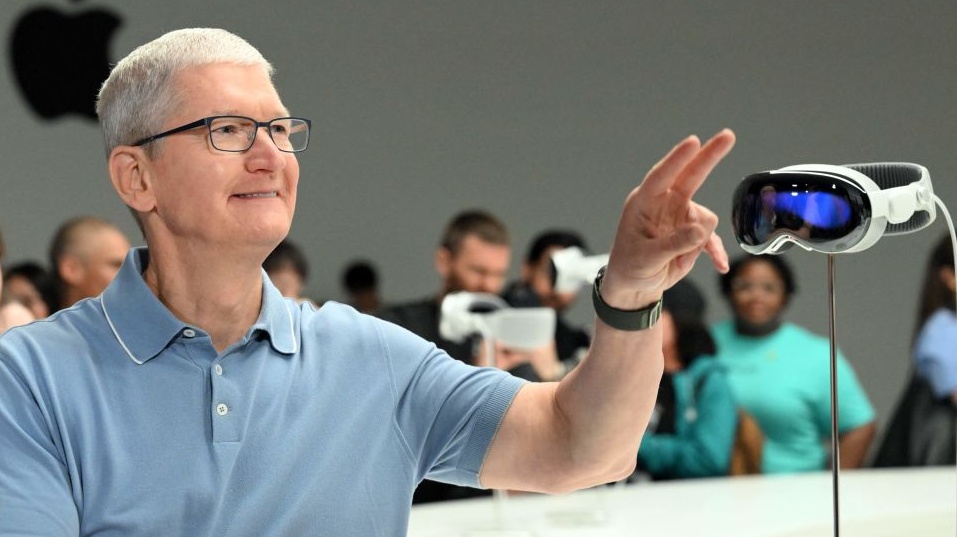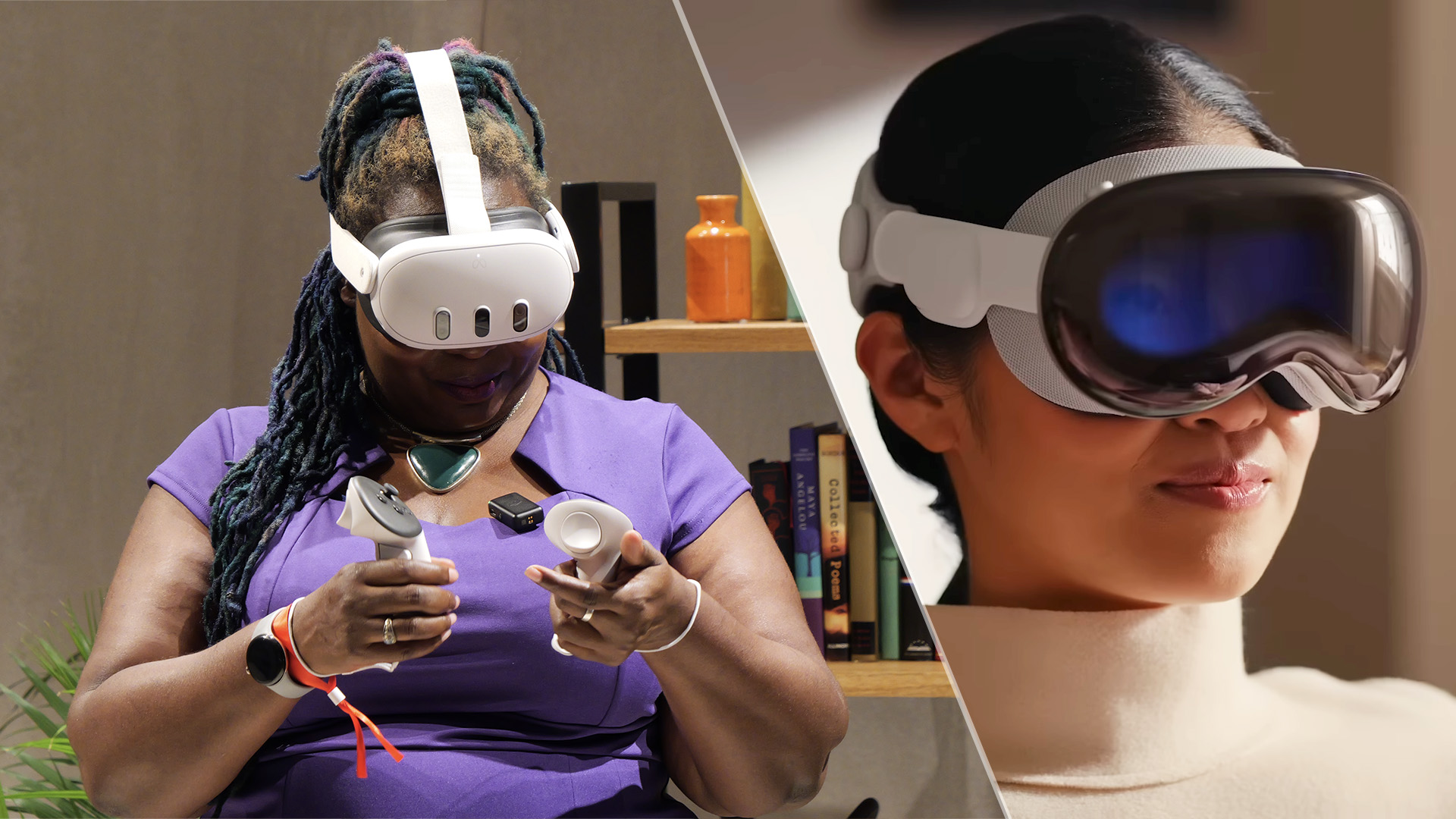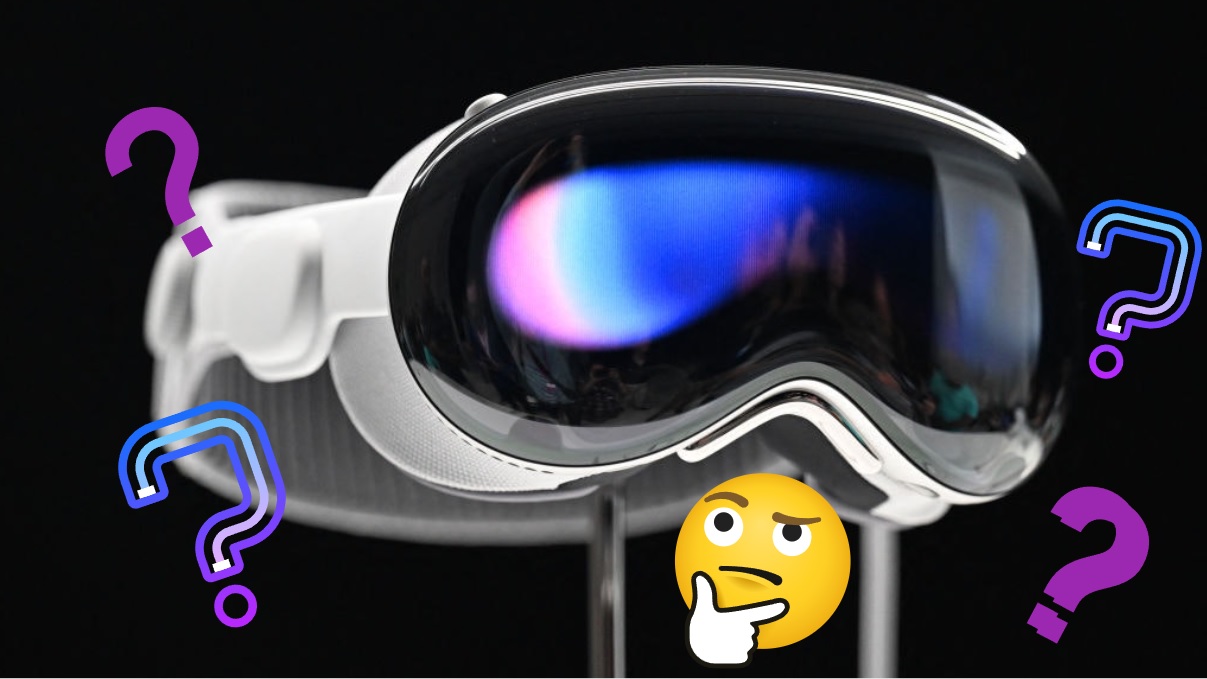Apple Vision Pro carves out a new competitive space — can Apple win again?
Apple changed its playbook with Vision Pro, but will it work?

When Mark Zuckerburg shared a video in which he argued that the Meta Quest 3 was not just a better value than the Apple Vision Pro “for most people,” but was the better product overall, he didn’t shy away from the device design strengths that have traditionally favored Apple. The Quest 3, he noted, is lighter, doesn’t require an external battery pack, and provides a brighter, less laggy experience that comes at the expense of its new competitor’s higher resolution.
But much of what you need to know about the two products is right in their names. The Quest is in its third generation, part of a product family that Meta has now been refining for a decade. Meanwhile, Apple has used the unusual naming convention of adding “Pro” to differentiate it from a baseline Apple Vision product that doesn’t (yet) exist. With such a head start and a long focus on virtual reality that has centered on games, it’s hardly surprising that the Quest 3 has a far richer native app library than its just-hatched competitor. Still, while just about every visionOS app makes at least some nod to the third dimension, it's a bit surprising that so few take great advantage of the spatial element of Apple’s spatial computing device given how long Apple had prepped developers and consumers for its arrival via iOS’ ARKit (which handles many key functions in visionOS).
Launching a platform with a strong suite of applications that fully exploit its (non-literal) depth is challenging for any company, especially one that plays its cards as close to the vest as Apple. (That said, Disney CTO Jamie Voris recently noted that it had been working with Apple on a version of Disney+ for the headset “for a few years.”). But the Apple Vision Pro is unlike any product that Apple has ever launched.
Thinking different

Products like the iPod, iPhone, iPad and Apple Watch were famously not first in their categories. Rather, Apple became known for sitting back for a bit, thinking “different” (as the slogan went), and enjoying leadership in a market that it pushed far deeper into the mainstream than early efforts. As if it were targeted as retribution for Windows' success versus the Mac, Microsoft in particular would often see its efforts overshadowed. Examples included PlayForSure media devices or Zune versus the iPod, Windows tablets versus the iPad, and Windows Phone (originally Windows CE) versus the iPhone. Most recently, Microsoft and Qualcomm have had to regroup to counter the performance of Macs based on Apple silicon despite launching Windows-on-ARM devices three years before the first M1-based MAcs.
Wary from having lost its big bet on mobile, Microsoft focused its own pioneering $3,000+ spatial computing headsets, HoloLens and its 2019 sequel, on custom enterprise applications. But a series of challenges have cast significant doubt on whether the platform will continue, particularly as Microsoft has shifted its attention to AI in a way that we’ve not seen since the early days of Internet Explorer. Such focus has claimed an even bigger casualty — the electric car project at Apple — although it is now embracing generative AI alongside spatial computing. Microsoft has been an early supporter of Apple Vision Pro, even if that has mostly meant bringing its two-dimensional productivity apps to the device. (It has also launched those apps for Meta’s headsets.)
Apple's multi-front war for spatial computing dominance

The Apple Vision Pro has been more of a category trailblazer than its past products. While Meta has been the undisputed leader in the consumer VR space and Zuckerberg notes that the Quest 3 can offer “mixed reality,” using cameras (as the Apple Vision Pro does) to show video of the real world while your eyes are blocked, it wasn’t designed from the start to straddle immersive and augmented spatial experiences like Apple’s headset.
In the last major device battlefront, the Apple Watch arrived a year after Android Wear, the predecessor to Wear OS that has struggled to win over customers. But while Google, Samsung and Qualcomm were all active in VR long before Apple Vision Pro with efforts such as Cardboard, Daydream and Galaxy VR, and Google was an AR pioneer with Google Glass. At Mobile World Congress, Samsung provided a first glimpse of its partnership with Google and Qualcomm to create a response to the Apple Vision Pro. Meta too plans to challenge its new competitor more directly with a comeback from the Quest Pro. Both camps hope to make a world in which Apple dominates spatial computing the way it does tablets and watches part of an alternate reality.
Stay in the know with Laptop Mag
Get our in-depth reviews, helpful tips, great deals, and the biggest news stories delivered to your inbox.

Ross Rubin is the founder and principal analyst at Reticle Research. Ross has been an industry analyst focusing on innovation in the technology, media and telecom markets for over 20 years. Prior to founding Reticle Research, he was executive director and principal analyst at The NPD Group, where he provided analysis on a wide range of technology topics and led research spanning devices, access and content. You can follow him on X and Threads @rossrubin.
